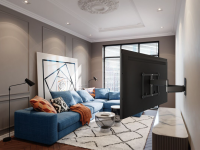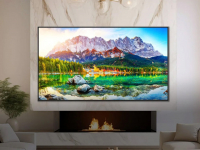
Buying a new television can be difficult and daunting, there seems to be more acronyms flying around than actual words: UHD, HVEC, OLED, SUHD, 3D. All of these are relevant when buying a new TV but the buzzword this year is HDR (High Dynamic Range)…
Put into practice initially in photographic imaging to create a greater dynamic range within the images. i.e. the whitest whites and the blackest blacks, television manufacturers are trying to achieve the closest picture possible to real life; not too bright, not too colourful, an experience that has only been obtainable when you visit the cinema. Well, now it’s possible at home, and it’s flawless.
HDR within televisions creates more detail within the darker areas of content, and helps lift the lighter regions too. Its basically trying to recreate what the human eye can see, as the human eye can adjust and differentiate to different lighting conditions. HDR gives you the best of both worlds, while a non-HDR scene, for example, a dark room with a bright window, may leave the audience guessing as to what is actually happening in those darker areas, while the view outside of said window is perfectly clear. HDR technology will give you the best of both, as demonstrated below.

Now, HDR televisions work a little differently to photographic imaging, televisions rely on nits, which is a measurement of luminosity – basically the brightness levels from a source of light.
Luminosity controls contrast, and colour representation, the more nits a television has, the greater amount of colours a TV is capable of. The more colours a TV is capable of, the closer the image is to real life.
The UHD Alliance has helped us out a little bit here and introduced Ultra HD Premium status, whereby a television MUST have a peak brightness of a minimum of 1000nits, thus meaning the television in question is capable of HDR10 and will subsequently have a 10-bit colour panel capable of (roughly) 1,024 shades of each primary colour; red, green, and blue. 1,024 x 1,024 x 1,024 = 1,073,741,824… yep, over ONE BILLION COLOURS. Unlike 8-bit colour panels which offer (roughly) 256 shades of each primary colour. 256 x 256 x 256 = 1,677,726. So, from a numerical stand point, there’s quite a difference.

Here is a relatively easy to understand analogy; if an artist was told to paint a picture using two colours, (this example being 8-bit) then told to paint the same picture again, but using 10 colours, (this example being 10-bit) imagine the final outcome… more detail, more colour.
Don’t go buying into HDR thinking it’s going to give Coronation Street that extra something special, it won’t. But if you’re into your movies and you’re searching for the best, then this is for you. HDR content is available through Netflix and Amazon streaming. As well as that, UHD Blu-ray has also adopted the format, and there are even talks of older films being remastered into HDR, so there’s plenty on offer, with more expected in the future.
HDR video is subtle, but for those naysayers who still aren’t sold on the jump from 1080p to UHD, please come into any of our stores and have a look for yourself, it really does bring a picture to life.
Shop TVs with Richer Sounds.
Author: Garrett, Plymouth store





